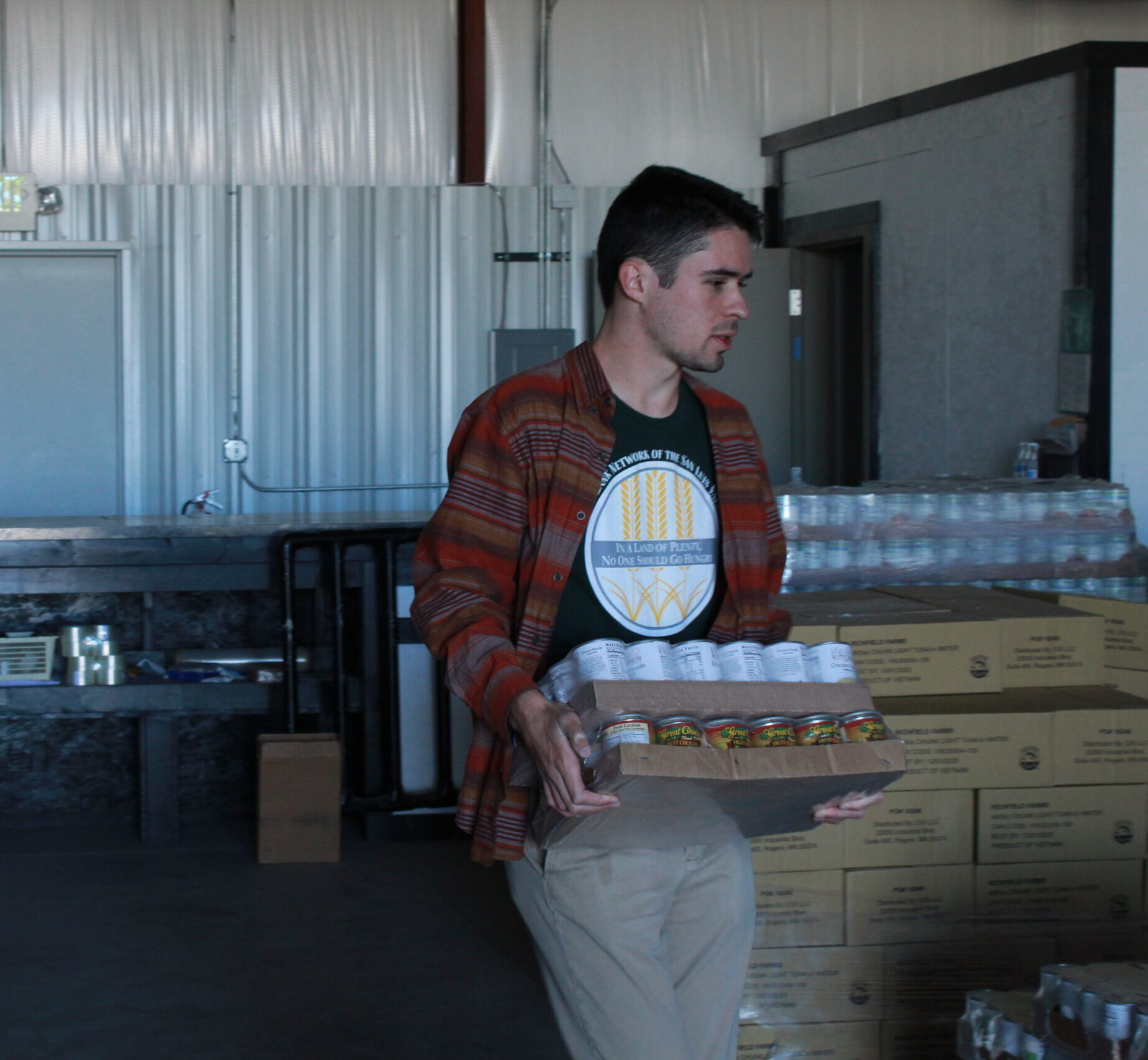Improbably Fed- Difficulties of Food Transport in the San Luis Valley

We asked some of our volunteers and employees at La Puente to write articles for Hunger Education Week which took place Sunday, May 7th through Friday May 12th, 2023. During this week we work to raise awareness surrounding the issue of food insecurity. Millions are still unable to eat sufficient food to meet basic nutritional needs. Hunger Education Week is a series of events designed to increase awareness about the realities of hunger in our communities and what we can do to help. Please read these articles as they focus on topics concerning food insecurities and how we can help our communities.
The following was written by La Puente’s own Ben Bachman who works with the Food Bank Network of the San Luis Valley in Alamosa and at the Shelter:
How Do We Get Groceries?
If you stop to think, the wide array of food available at grocery stores and food banks – especially in the remote San Luis Valley – is nothing short of miraculous. So what makes a grocery store or a food bank possible? Here in the Valley and across the country, the commercial food system relies on a complex network of transportation and storage. Since the 1950s, the majority of US food products have traveled on specialized long-haul trucks (Trucking Country: The Road to America’s Wal-Mart Economy). However, moving food on trucks presents challenges that most people never think about and depends on resources that many take for granted, such as diesel fuel and an extensive, well-maintained road network.
Impact on Small Communities
One Friday this past March, a semi-truck rolled down the narrow alley between Main and Sixth Street in Alamosa. Idling there among the low buildings, the truck looked gargantuan in the sharp morning light. Once the garage door behind the Alamosa Food Pantry swung open, the truck driver jumped down to relay delivery information and assess the available storage. Next, the driver got straight to work, unloading pallet after pallet of food: Canned goods, different breads and pastries, and fruits and vegetables stacked so high they could not fit through the door without taking off the top layers. It was a struggle to keep up and make room for such a large influx of food in such a small storage space. When all the pallets were finally inside, there was barely enough room to fit a shopping cart between the great stacks of food on scaffolding by plastic and cardboard. In total, eighteen pallets were delivered to the food pantry that morning from the regional food bank based in Colorado Springs.
These short, 15 minutes from a Friday in March capture just how much work it takes to provide food to those in need. It also speaks to the real challenges of food transportation. Food deliveries from the regional food bank typically occur on Wednesdays, but this one was delayed to Friday due to high winds and winter weather that made it unsafe for a semi to brave the trip over the mountains. A winter storm might delay deliveries to the food bank or to food retailers like Safeway, City Market, and Wal-Mart, but the negative effect is usually absorbed as soon as the pass opens and the next trucks roll over. Other disruptions to food distribution can have much wider and longer-lasting impacts.
Food Prices Directly Relates to Transportation Costs
Food prices and transportation costs are intimately connected, with fuel prices playing a major role. With recent declines in fuel prices, consumers have seen the first overall decline in costs at the grocery store since September 2020 (PBS News Hour). Nonetheless, the past couple of years have taught US consumers that the commercial food system is vulnerable to long-lasting effects from shocks like Covid-19 and the conflict between Russia and Ukraine. This instability, considered alongside the recent end of SNAP emergency benefits (Forbes), leaves consumers in a tricky position; there is no assurance that food will remain affordable, and no guarantee that assistance will be available when food costs are prohibitive. For many people here in the Valley, the prohibitive cost starts with filling a tank of gas to drive dozens of miles to the nearest food outlet. At the food bank, we see these difficulties at play for our clients on a daily basis.
The task of providing residents of the SLV with ample access to affordable and nutritious food demands that we pay attention to the vulnerabilities in our food system. It is not simply a question of fighting hunger now but fighting hunger for years and generations to come.
